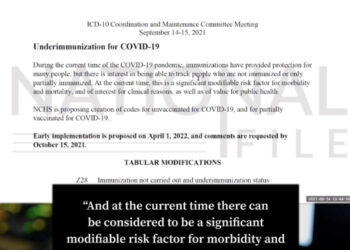Last Updated on September 9, 2019
In a series of nine films made by the BBC shown to a target audience between the ages of nine to twelve, one of the short films called “Identity – Understanding Sexual and Gender Identities” addresses more controversial topics surrounding sex and body image.
The film was criticized as being ‘nonsense’ and ‘confusing’ to its young audience.
It is thought that the number of genders will cause confusion among a younger audience.
Some people argue that the topic has been politicized and that children should be allowed to experience childhood free from hypersexualization.
Many believe that what is being funneled to children as educational could be responsible for an upsurge in preteens identifying as transgender.
According to The Daily Mail:
In one video, titled Identity – Understanding Sexual and Gender Identities, a young boy asks: ‘What are the different gender identities?’
The teacher on screen, Kate Daniels, then says: ‘We know that we have got male and female but there are over 100, if not more, gender identities now.’
Ms Daniels then goes on to explain that some people are ‘bi-gender’ and so feel as though they are two genders at once, as well as that some people are ‘gender-queer’ and ‘don’t want to be anything in particular’.
It is feared that the advice that there are more than ‘100 genders’ will cause confusion as increasingly more children are seeking to change their gender identity.
Six genders are currently recognized by The Royal College of General Practitioners.
The National Health Service has a page on its website for parents who believe their children might be transgender, stating the following:
If your child seems confused about their gender, it’s usual for parents to feel puzzled or worried. But there is help available to support you and your child.
It’s not unusual for children to show an interest in clothes or toys that society tells us are more often associated with the opposite gender.
With toy stores dedicating whole floors to colour-coded boys’ or girls’ toys, as just one example, it’s not surprising that parents may expect a child to closely match traditional expectations of how male and female genders should behave.
You may be worrying that your child’s exploration of different gender preferences and behaviours is not “normal” or you may feel that such explorations are somehow your “fault”. However, none of this is the case.
We now believe that gender identity is on a spectrum, with male at one end, female at the other and a “diversity” of gender identities in between. These can include male and female, non-binary or even agender (no gender).
A young child’s exploration of different gender identities is quite common and, in most cases, will fade. However, in some, it will continue into later childhood and adolescence.
The NHS Tavistock clinic has been accused of covering up negative effects from the medical use of puberty blockers.
The Daily Mail Reports:
Between 2017 and 2018, 2,519 young people were referred to the gender development service at the Tavistock and Portman NHS Foundation Trust in London.
There was recently a protest at a Sussex school over their mandatory gender neutral dress code.
Other schools have come under fire for their ‘mixed sex’ bathroom policies.





















